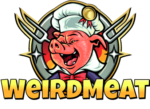Conch is a popular seafood dish that can be eaten raw or cooked. Either way, it’s always delicious.
Conchs are sea snails that are found in warm waters throughout the Caribbean. They feed on algae, sea grass and sand.
Overview of Conch as a Food Source
Conch (rhymes with honk, not haunch) is an important food source for people all around the world. It is used as a raw ingredient in salads, stews and chowders in many different cuisines, including the Caribbean Islands.
In fact, conch is an excellent source of protein and other key nutrients. It is also a low-calorie option, with 127 calories per serving.
It has also been found to contain a number of vitamins and minerals, including vitamin B12, magnesium and iron. For example, a 127-gram cup of cooked conch has 302 mg of magnesium, which is 72% of the daily required amount.
Culinary Uses and Traditional Dishes
Conch is widely used as a culinary ingredient throughout the Caribbean. It is served in a variety of ways, including raw, grilled, or boiled as a soup.
Conch salad is a popular dish in the Bahamas and the Caribbean that incorporates lime juice, vegetables, and conch meat. It is a refreshing, zesty, and sweet dish that can be enjoyed as a side or a meal.
Cracked conch is another traditional Bahamian dish that features breaded and fried conch meat. It is often served as an appetizer or paired with french fries, peas and rice, or a sweet bread roll.
Availability and Market Trends
Queen conch (Lobatus gigas) is a popular meat in a variety of dishes across the Caribbean and Atlantic. It is primarily consumed raw or cooked in a wide range of dishes, including soups, curries and salads.
Commercially, the Bahamas and Turks and Caicos Islands are major sources of this seafood. It is also harvested in Honduras and the Dominican Republic.
Fishing for this species has declined in recent years, and the adequacy of current regulations is unknown. Effective enforcement and cross-border poaching are important to protect this valuable marine resource from overexploitation.
The FAO Western Central Atlantic Fishery Commission recommends exploitation rates of 8 percent or less of standing stock to ensure population sustainability under controlled harvest. However, many data-poor jurisdictions are fishing at or above this exploitation rate and have adult densities below the minimum density threshold (50 adult conch/ha). These factors indicate that the fishery is unsustainable and overutilization is likely occurring.
Health Benefits and Concerns
Conch is a nutrient-dense food with a variety of beneficial nutrients including protein, iron, selenium, vitamin E and B12. It’s also low in calories, making it a great addition to a healthy diet.
It also contains vitamin E, which plays a critical role in the immune system. It’s also a good source of magnesium, vitamin B12 and folate.
Like all shellfish, there are some health concerns associated with eating conch. These include coliform and vibrio parahaemolyticus bacteria, which can make you sick if eaten raw.
Sustainability Issues
Queen conch are a vital part of the seagrass ecosystems in the Bahamas, and they contribute approximately $3 to 4 million annually to the country’s economy. But their long-term health depends on the conservation of their habitats and a sustainable fishery.
In the Bahamas, the population of Queen conch is declining, and overfishing is one of the biggest threats to the species’ future. The Conservancy team in The Bahamas is working with local fishers to build on a recent project that engaged them in learning about the biology of Queen conch, and how to correctly measure lip thickness as an indicator of maturity.
In addition, the Conservancy team is collaborating with Bahamian fisheries managers to provide concrete guidance on improved, standardized conch data collection protocols and continue exploring management options to recover the queen conch fishery and ensure its sustainability.

